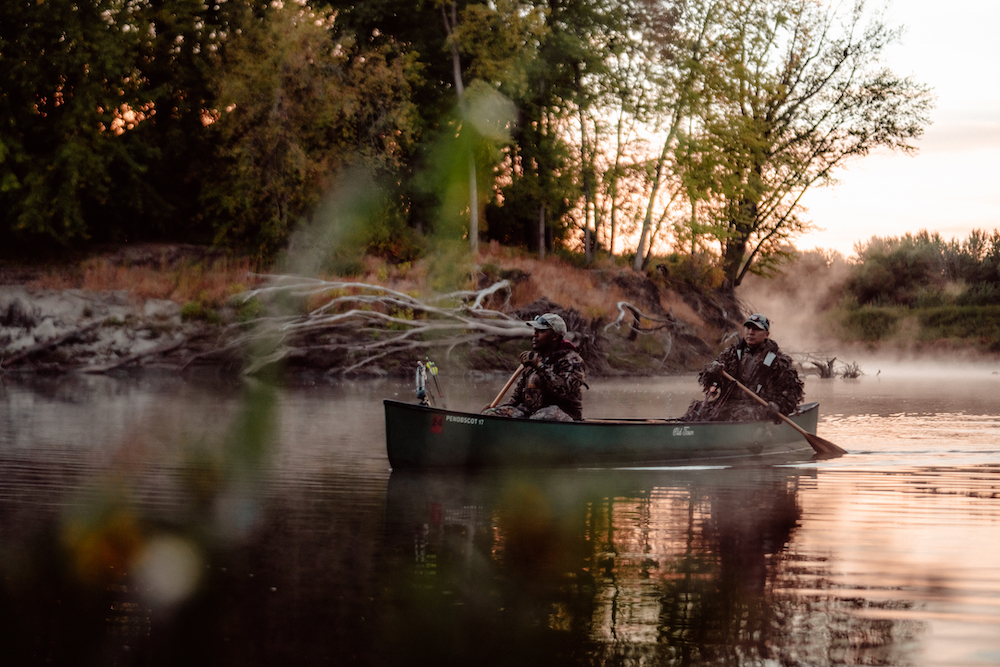Even a buck with superior genetics and the best diet will never reach his full antler-growing potential if he’s killed after only a few years. Hunting folklore is full of stories about giant swamp bucks, and the swamps themselves are why the deer get so large. They dwell in inhospitable places where predators can’t sneak up on them.
Swampy terrain serves as ideal bedding cover for all deer, but mature bucks in particular. Whether you’re in cattails, bottomland hardwoods, riparian alder thickets or coniferous swamps, the cover provided by a swamp is thick, and the presence of water makes it difficult for predators to approach conveniently or quietly. A buck can bed on a high spot and keep tabs on approaching predators slogging through the water and thicket, then simply slip away if the predator draws near.
Because of the tough terrain, many hunters opt to hunt on the edges of swamps, where they rise up to more hospitable ground. Transition areas between swamps and feeding areas are ideal places to shoot deer, but you’re likeliest to encounter does and small bucks in such places. Mature bucks wait until the cover of darkness to exit their lair, except during the rut when their raging hormones cause them to throw caution to the wind.

Using a canoe will help you navigate the water. Photo Credit: BU
For the best chance of encountering a mature swamp buck, you’re going to have to go in after him. This presents logistical problems. Depending on how deep the water is, you may get by in knee boots, or you might need chest waders or even a boat. Hiking in tall rubber boots isn’t stealthy and you’ll likely work up a sweat. If there’s a navigable river, creek or ditch, using a canoe or kayak is a great option. You can paddle much more quietly and effortlessly than you can wade. If you can pick a stand site close to the water, you can slip in undetected fairly easily, and paddling a dead deer out of a swamp is a breeze.
Which type of stand you choose for hunting swamps depends on the cover. In bottomland hardwoods, you may have plenty of potential trees for using hang-on or climbing stands. But in cattails or alders, you might have to use a tripod stand or a ground blind.
Like hunting in any terrain, scouting is important to figuring out a buck’s movements in swamps. Due to the soft, wet ground, trails tend to be well defined. Setting up at the juncture of multiple well-used trails is a good option. Perhaps a better bet is hunting pinch-points, where narrow swaths of brush or trees cross open grass or cattails. Sometimes deer even use beaver dams to cross water. This provides another pinpoint travel route that narrows down stand selection. Some swamps, such as oak bottoms, offer both food and cover, whereas a tamarack swamp offers little food and serves mostly as bedding cover. In that case, find out where deer are feeding and try to connect the dots between food sources and bedding areas.
There are high and dry areas in most swamps, and that’s where you’ll find deer beds. It doesn’t take much high ground for a deer to find a place to lie down. Sometimes a spot that’s only a couple of feet higher than the surrounding terrain and barely big enough for a deer serves as a bedding site. Other times, you might find a ridge running throughout the swamp, yielding unlimited bedding locations. Scout to find out where deer spend their idle hours.
If you’re planning to penetrate a buck’s lair, you’d better not be afraid of the dark. For morning hunts, you’ll have to slip back into the boonies well before daylight to catch a deer sneaking back to his bed after an evening of feeding. Even if you’re planning an evening hunt, you’ll likely be traversing water in the dark on your way out. If you’re going through the effort to get deep into a buck’s turf, it’s probably worth sitting all day.
One consideration bowhunters might overlook is how to get a deer out of a swamp if they are successful. A canoe or other watercraft, as mentioned, is a great option if it’s feasible. But you might drop a deer on ground too thick or too soft to utilize an ATV. An amphibious ATV may be an option, but few people own them. If you drop a buck in the tag alder in knee-high water, you may need to buy your buddies several rounds of drinks if you want their help.Where legal, quartering the deer makes retrieving it from the depths of a swamp much easier.
Hunting swamps isn’t easy, and it’s not for the casual bowhunter. But if you want to encounter one of those big, legendary swamp bucks during legal shooting hours, going deep into the muck and brush is your best option.